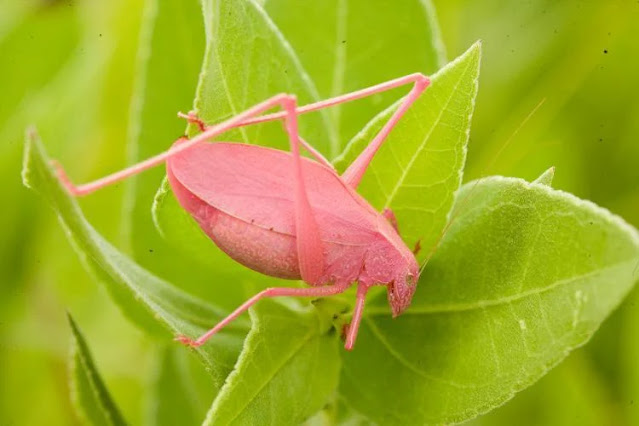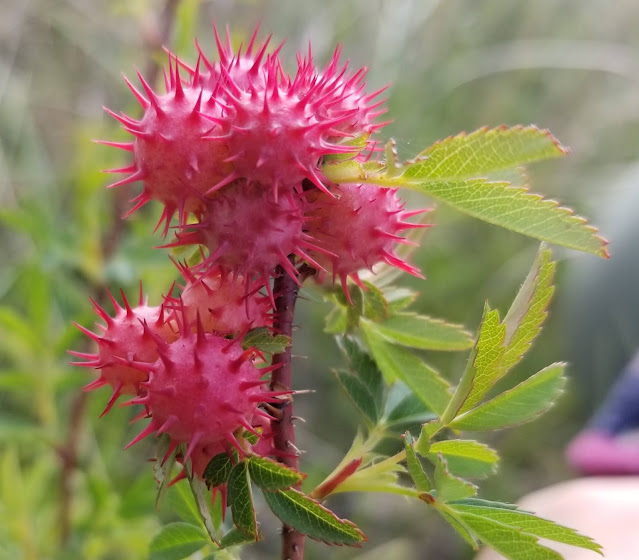The 5th grade WOLF class explored La Petite Gemme Prairie last week with their usual vigor. We found lots of the usual suspects and some great new finds. One of my favorites was the beauty above that was on the prairie roses in great numbers. These occurred in small 1-3 foot clumps scattered across the prairie. This is Carolina rose, Rosa carolina. This prairie rose is found across the US, ranging from glades, open woods, prairies, to wet soils along streams and swamps and low areas. We commonly find these colorful leaf galls decorating them on the prairie.
Much of what is written about rose galls focuses on how to get rid of these "pests." Apparently a rose-growing purist doesn't see the same beauty as my 5th grade colleagues did on the prairie. There are roughly 50 Diplolepis sp. which are in the Cynipid wasp family. Their larvae induce galls on wild roses, and rarely on domestic roses.
 |
| Diplolepis sp - Charley Eiseman |
The insect overwinters as a larva in the gall. In early spring the adult wasp matures and chews out through the gall, just as the first cells of leaf tissue appear. After mating it looks for fresh expanding leaf tissue to lay eggs on. The eggs attach to 1-2 plant cells and this induces gall formation. Once hatched, the larva feeding stimulates gall growth even more. This provides food and shelter until the next spring. There is only one generation per year.
Diving deeper, Diplolepis sp. have their own special problems. While safely hiding in the gall, there are interlopers that can move in with them. Most Diplolepis galls are known to host inquilines - species that invade and occupy a gall but do not feed on the larva. They may however harm the larva by competing for their resources like a hungry roommate.
As if life wasn't tough enough, Diplolepis species and their inquilines can be attacked by a wide variety of parasitoid wasp species. With this complex intra-gall food chain, I no longer feel bad about opening mine up.
 |
| Prairie Crayfish |
This year we had several other personal firsts. In the classroom we had talked about the prairie crayfish which burrow tunnels down to water level sometimes as far as 6 feet below the surface. Three different student teams found dead crayfish on the ground around their deserted burrows.
 |
| Oblonged-winged Katydid - MDC |
My personal highlight was a pink katydid. I have read about them for years but it took sharp-eyed WOLF students (who are incidentally built lower to the ground) to actually capture one. We commonly find the green form and the pink-yellow-orange variants are common in prairies but are thought to be eaten by predators because of their lack of camouflage as explained by MDC here. We couldn't get good pictures through a plastic bug box and all living finds are returned to the prairie unharmed.
Finally, a popular if not rare find was this ornate box turtle seen in this video plowing through the dense vegetation which must feel like a forest to it. It is either looking for insects and an occasional berry for dinner or possibly looking for love.
Barb and I are privileged to go on a field trip with young eyes. They see more and are more inquisitive, leading us to see a fresh view of a prairie. More on the WOLF School is at this link. La Petite Gemme Prairie is owned and protected by the Missouri Prairie Foundation, one of 32 protected prairie remnants. More past prairie adventures in these blogs.

